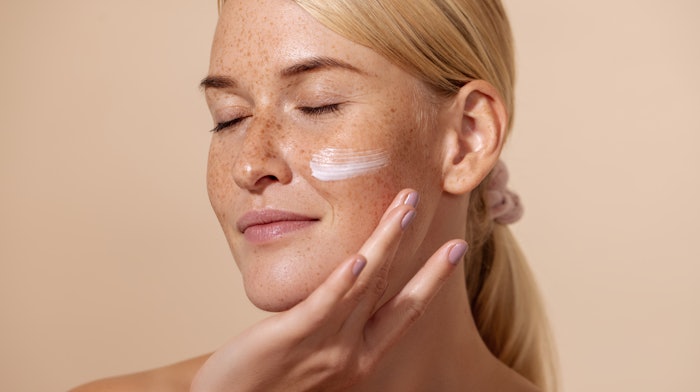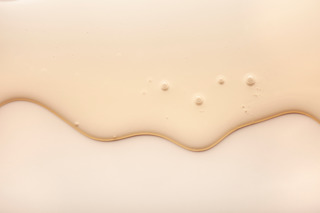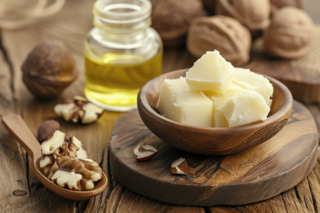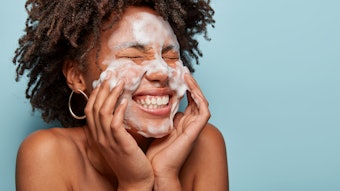
In its 2024 wellness report, McKinsey noted thata, “Roughly half of U.K. and U.S. consumers reported clinical effectiveness as a top purchasing factor, while only about 20% reported the same for natural or clean ingredients.”
Log in to view the full article
In its 2024 wellness report, McKinsey noted thata, “Roughly half of U.K. and U.S. consumers reported clinical effectiveness as a top purchasing factor, while only about 20% reported the same for natural or clean ingredients.”
At the same time, the report explains, “Consumers said they are most influenced by doctors’ recommendations when seeking care related to mindfulness, sleep and overall health,” including the selection of personal care products and vitamins.
This isn’t evidence that clean concepts are going away; instead, it points to an efficacy-first mindset among shoppers. It also isn’t an entirely universal mindset. According to McKinsey, about equal percentages of Chinese consumers prefer clinical or clean products, but that balance tips in favor of clean/natural offerings when it comes to personal care and supplements.
McKinsey notes that a rising preference for clinically proven products may require some brands to reformulate products, while others in the clean space may merely need to secure third-party studies and certifications to reinforce the claims shoppers are seeking.
The clinical trend simultaneously crosses over into other sectors impacting ingredients and formulations, including healthy aging.
From Anti-aging to Longevity
 According to McKinsey, “Roughly 70% of consumers in the United Kingdom and the United States and 85% in China indicated that they have purchased more [healthy aging/longevity products] in the past year than in prior years.”Jacob Lund at Adobe StockAccording to McKinsey, “Roughly 70% of consumers in the United Kingdom and the United States and 85% in China indicated that they have purchased more [healthy aging/longevity products] in the past year than in prior years.”
According to McKinsey, “Roughly 70% of consumers in the United Kingdom and the United States and 85% in China indicated that they have purchased more [healthy aging/longevity products] in the past year than in prior years.”Jacob Lund at Adobe StockAccording to McKinsey, “Roughly 70% of consumers in the United Kingdom and the United States and 85% in China indicated that they have purchased more [healthy aging/longevity products] in the past year than in prior years.”
The report adds that, “More than 60% of consumers surveyed considered it ‘very’ or ‘extremely’ important to purchase products or services that help with healthy aging and longevity.”
As reported in the January 2024 edition of this report, longevity concepts have been on the rise in beauty amid this shift in consumer sentimentb.
Evonik's new Vecollage Fortify L bridges the emerging demands for clinical, clean and longevity-focused ingredient technologies.
This biotech-based, vegan, skin-identical and recombinant sustainable collagen for anti-aging and hydrating creams positively impacts the dermis to prevent age-related degradation while also stimulating the skin’s own collagen production, per Evonik.
The launch of Vecollage Fortify L is part of a broader move by Evonik to develop non-animal and sustainable collagen.
The material was developed in partnership with fermentation-based protein specialist Modern Meadow Inc., which first developed vegan, biocompatible collagen under the Bio-Coll@gen brand.
Meanwhile, Evonik’s Venture Capital group has invested in China-based Jland Biotech; under the agreement, Evonik will market Jland's vegan collagen for skin care, anti-aging and hydrating creams, among other cosmeceutical, bioactive applications.
The collagen will be "manufactured in collaboration with Jland," according to Evonik, and will be commercially launched later in 2024.
The new collagen technology, which is fully registered with the Vegan Society, will complement Evonik's Vecollage Fortify L technology.
High tech ingredients such as these emerging biotech collagens feed into consumers' growing demand for dermatologically sound beauty products.
Evonik argues that bacteria- or yeast-derived non-animal collagen produced via controlled fermentation-based processes "is easier to formulate and better absorbed by the skin than animal-derived collagen."
Furthermore, collagen produced via this process reportedly "has low immunogenicity and batch-to-batch variability and is highly reproducible."
In addition to clinical and longevity-focused ingredient technologies, a number of suppliers have launched technologies that address key consumer issues and product differentiation demands. Here, we round up a number of leading materials.
Sensoriality in Focus
 Strategic use of sensory materials in formulations can enhance product loyalty, support perceived efficacy, provide a hook for social media, and provide holistic care to consumers while reducing stress.tatyanarow at Adobe StockA new reportc from Kline argues that the application of emollients and moisturizers, delivery systems, fragrances and essential oils, texture modifiers, and exfoliants can boost sensorial experiences to elevate everyday products and create “indulgent rituals that engage the senses” and emotions while also differentiating products in a crowded and dupe-riddled beauty market.
Strategic use of sensory materials in formulations can enhance product loyalty, support perceived efficacy, provide a hook for social media, and provide holistic care to consumers while reducing stress.tatyanarow at Adobe StockA new reportc from Kline argues that the application of emollients and moisturizers, delivery systems, fragrances and essential oils, texture modifiers, and exfoliants can boost sensorial experiences to elevate everyday products and create “indulgent rituals that engage the senses” and emotions while also differentiating products in a crowded and dupe-riddled beauty market.
Strategic use of these materials in formulations, the firm argues, can enhance product loyalty, support perceived efficacy, provide a hook for social media, and provide holistic care to consumers while reducing stress.
Among recent sensory ingredient technology launches is BASF's Emulgade Verde 10 MS, a green, natural O/W emulsifier that promotes lamellar structures and gives easy distribution and moisturizing feel. The material's polyglyceryl-10 (PG-10) chemistry is said to be close in chemistry to PEGs and therefore acts as a natural alternative that's close in performance, per BASF.
The high molecular weight of PG-10 in Emulgade Verde 10 MS allows for more stable emulsions. The technology is derived from 100% from natural feedstocks and made using a solvent-free process.
It is also suitable for skin care, hair care, color cosmetics and sun care.
Meanwhile, the company's Emulgade Verde 10 OL is a green, natural O/W emulsifier for low viscosity emulsions, enabling high oil load with light skin feel.
Additional technologies in BASF's range include Emulgade PL 68/50, a natural, APG-based self-emulsifying O/W cream base that promotes lamellar structures; Eumulgin B2, a traditional ethoxylated O/W emulsifier that works "very well even under challenging conditions like low pH or with zinc oxide formulations," per the company.
"Emulsifiers play an important role in determining the right skin feel of a cosmetic product and influencing the consumer’s acceptance of the product, especially during the application phase," says Montserrat Franco Rojas, marketing communications manager for BASF Care Chemicals, North America. "They can influence texture, viscosity, and appearance. It is difficult to understand the value it brings without putting it in a formula. Different emulsifiers offer different sensory and texture benefits. That's why BASF has developed an Emulsifiers Tool Kit to support customer's understanding of how different emulsifiers change formulations. For example, Emulgade Verde 10 MS, polyglyceryl-10 stearate, is a lamellar structure provider that gives easy distribution, a moisturizing feel, and added viscosity. It would be great for a face or body cream. In contrast, Emulgade Verde 10 OL, delivers a light skin feel and enables low viscosity emulsions even with high emollient load. It would be great for a light, moisturizing face mist."
Rojas adds, "With innovations like Emulgade Verde 10 MS brands no longer need to choose between performance and sustainability. The unique molecular weight distribution of this polyglyceryl-10 emulsifier allows for robust emulsions, reliable lamellar structure formation, and versatile applications, comparable to ethoxylated and PEG emulsifiers."
Among BASF's emollients are Cetiol Ultimate, a fast-spreading emollient with a silicone oil, powdery and wax-dry skin feel. The technology reportedly feels smooth and easy to distribute before disappearing to leave a dry skin feel. The material is reportedly close in volatility and feel to D5.
Other technologies in the Cetiol family include C5/C5 C, which has a cushiony oil-smooth skin feel, Cetiol CC, which gives a dry cushiony feel, and Cetiol OE, which gives a cushiony wax-dry feel.
The company has responded to silicone-free claims with ProNature Beauty, a dimethicone sensory alternative concept launching at the 2024 NY Suppliers' Day that reportedly showcases how AI can speed up the development process to replace silicones. The company's Emollient Maestro system can reportedly be used to determine the best emollient combination to match different viscosities of dimethicone.
The system's dimethicone replacement recipes are said to create green formulations that are comparable to commercial benchmarks featuring dimethicone; sensory performance, anti-foaming effects and gloss found in these recipes can be assessed against commercial benchmarks.
Furthermore, BASF's Emollient Jockey tool, housed within BASF's D'lite digital platform, allows formulators to compare the physicochemical and sensory properties of emollients.
"Emollients ... primarily determine the after feel of a formulation and can influence viscosity or texture," says Rojas. "Fast-spreading emollients like Cetiol Ultimate contribute to a light, dry skin feel and is an excellent natural alternative to volatile silicones. Slow-spreading emollients provides a long lasting, caring and moisturizing skin feel. A soft-solid emollient like Cetiol SoftFeel keeps skin moisturized and provides TEWL reduction on par with cosmetic grade petrolatum."
She adds, "Emollients are also used to provide functional benefits, including shielding the skin by providing a protective layer, solubilizing lipophilic active ingredients or crystalline UV filters, dispersing pigments, and acting as a solubilizing agent in make-up removers."
Rojas continues, "Natural emulsifiers are replacing synthetic emulsifiers as brands are moving away from traditional EO and PEG emulsifiers due to safety and environmental concerns. Ethoxylated ingredients may be contaminated with 1,4-dioxane which is a human carcinogen and does not readily biodegrade in the environment. Hence, some states have 1,4-dioxane limits and many industry clean lists like Sephora Clean have restrictions on EO and PEG-containing ingredients."
Elsewhere, Ingredion’s Farmal 21T tapioca starch for smooth, soft sensory applications such as deodorants, baby balms, lotions, creams, setting powders, bronzers, dry shampoo, color cosmetics and aerosol sprays.
The material, a viable talc alternative (though 36% brighter and 11% more white), reportedly boosts oil absorbance for grease and tack reduction to create smooth, dry-to-the-touch effects. The starch also improves the stability of emulsions.
Meanwhile, Beauté by Roquette ST 320 hydroxypropyl corn starch phosphate has been launched to easily thicken and stabilize formulations for optimal viscosity and sensory payoff. The biodegradable material has a 94% natural origin index, per the supplier, and can be applied to everything from hair and skin care, to sun products, oral care, hygiene, color cosmetics, and more.
Momentive Performance Materials’ Harmonie GB-2301 silicone gum blend (INCI: C9-12 alkane (and) dimethiconol) provides the conditioning and sensory benefits of silicone gum blends from a naturally derived biodegradable carrier. The material is applicable to hair care (for smoothing, frizz and flyaway reduction, gloss, and a soft and silky feeling), skin care, sun care and color cosmetic applications, per the company, and serves as a viable alternative to silicone gum blends based on volatile cyclic silicones like cyclopentasiloxane (D5) or petrochemical derivatives such as isododecane.
Lubrizol Life Science Beauty’s (LLS Beauty) new Sensomer Tara polymer is a natural, biodegradable (according to OECD 301F), COSMOS-approved film former and thickener that works synergistically with other thickeners (ex: the company’s Kelco-Care diutan gum for increased yield value, emulsion stabilization and higher viscosity) while imparting pleasant sensory benefits to skin care, hair care and hair color applications.
The vegan-suitable Sensomer Tara polymer can reach a viscosity of 40,000 mPa∙s, generating high-viscosity formulations for a thicker, creamier and silkier feel in beauty formulations, including moisturizers, sunscreens, hair conditioners, styling products and color treatments.
In skin care in particular, the technology allows for creamy textures free of drag or stickiness but with good pickup with no stringiness, per LLS Beauty.
In hair conditioners and treatments, Sensomer Tara polymer reportedly delivers conditioning benefits to the fiber, while providing a smooth and easy to spread texture. In hair styling applications, the technology reportedly shows better curl retention and better smoothness feel than guar gum. Furthermore, the polymer protects the hair fiber against pollution particle adhesion, per LLS.
Nippon Fine Chemicals’ Inulin SC (INCI: inulin) comprises sugarcane-derived polysaccharides that deliver moisture in formulations while reducing sticky/greasy sensory impressions. The technology reportedly enhances texture without changing viscosity and increases the volume and density of bubble volume.
Elsewhere, CP Kelco’s Kelcosens Citrus Fiber, upcycled from citrus peels and certified by the Upcycled Food Association, reportedly stabilizes emulsions and imparts a pleasant, light texture to formulations—without the addition of emulsifiers. This ingredient is intended for use in facial creams, serums and body lotions and is cold processable.
Cosphatec’s Cosphaderm E NGM natural is a liquid lysolecithin derived from soybeans that reportedly offers improved emulsifying and dispersing properties in aqueous environments and a higher water-binding capacity. Due to their strong hydrophilic character, lysolecithins are ideal co-emulsifiers for O/W emulsions with high water content, Cosphatec. The ingredient also contributes to improved hair combability in conditioners and to a light and silky skin feel in leave-on formulations.
Meanwhile, IOI Oleochemical’s Imwitor 372 P (INCI: glyceryl stearate citrate) is a natural anionic O/W emulsifier that comes in flakes for easy processing, imparting uniform spreading and a smooth and soft afterfeel, per the company. It is reportedly compatible with multiple textures (lotion, cream and butter) or applications (baby, skin or hair care).
Multidimensional Skin Care Innovation
From moisturization to microbiome balance to brightening, a range of new ingredient technologies have been launched to support consumer-demanded claims.
Improving Hyaluronic Acid
 From moisturization to microbiome balance to brightening, a range of new ingredient technologies have been launched to support consumer-demanded claims.Jacob Lund at Adobe StockTwo recent launches provide enhanced benefits for hyaluronic acid.
From moisturization to microbiome balance to brightening, a range of new ingredient technologies have been launched to support consumer-demanded claims.Jacob Lund at Adobe StockTwo recent launches provide enhanced benefits for hyaluronic acid.
First up, Givaudan Active Beauty’s PrimalHyal 50 Life is a sustainable low-molecular-weight hyaluronic acid developed via strain engineering and precision fermentation. The company’s production technique reportedly reduces the environmental impact of the ingredient by 91%, per Givaudan. This includes a 92% reduction in greenhouse gas emissions, 95% drop in acidification and eutrophication of water, 90% decline in non-renewable energy usage and a 75% reduction in water consumption.
PrimalHyal 50 Life is reportedly capable of skin penetration up to 120 µm and prevents trans-epidermal water loss via stimulation of tight junctions. Users experience 72 hours of boosted skin hydration and a 66% decline in skin roughness after one month.
Overall, consumers will experience improvements in skin texture, firmness and hydration, as noted by research volunteers.
Meanwhile, Contipro’s COSMOS-certified HA-Oil (INCI: Ricinus communis seed oil, sorbitan olivate, sodium hyaluronate, caproic acid) is a hydrophobized hyaluronic acid dispersed in oil. This hydrophobized format reportedly supports better ingredient penetration.
In formulations, the technology is said to stimulate hair growth and increase hair strength, smooth lips and provide a plumping effect, boost the skin barrier and hydration, reduce sebum and the appearance of pores, and calm the skin.
The technology is produced by fermentation of a non-hemolytic microbial strain, Streptococcus equi, and is recommended for use at levels of 1-2% in face and body oils, hair cosmetics (oils, masks, balms, etc.), lip balms and lipsticks, and decorative cosmetics.
Inclusive Complexion Perfector
Silab’s Inclusium (INCI: water and Medicago sativa (alfalfa) extract) multifunctional skin care technology features alfalfa polysaccharides (galactomannans) to support epidermal and dermal functions by stimulating their biological pathways. The technology reportedly smooths and perfects the complexion after seven days of use for young and mature skin alike, as well as for consumers with Caucasian, Asian, Latin American and African roots.
Upcycled Moisturizer
Biolie’s Cicamaize (INCI: aqua (and) propanediol (and) Zea mays (corn) kernel extract) is a natural and COSMOS-approved aqueous active from upcycled corn cobs, produced with the company’s zero-waste enzymatic extraction technology. The technology reportedly has significant moisturizing benefits.
Bioconcealer for Under Eye Care
Sederma's new Ameyezing 4.0 bioconcealer reportedly promotes naturally brighter eyes by reducing the color of hyperpigmented melanic dark circles and reducing redness and puffiness by minimizing vascular dark circles.
The technology comprises a Zingiber zerumbet extract obtained by supercritical CO2 extraction from organically grown and fully traceable biomass sourced in Mauritius.
The extraction reportedly features a reduced number of steps to limit the process’ energy consumption.
Ameyezing 4.0 is IECIC compliant, water soluble, suitable for cold processes and COSMOS approved.
Cross-category Innovations
Self-preserving Formulation Aid
Inolex’s SystemSpectrastat GHL Natural (INCI: caprylhydroxamic acid (and) glyceryl heptanoate (and) propanediol) comprises ingredients that reportedly allow for the creation of self-preserving formulations. The ingredient is also ideal for clear formulations and is effective in emulsions, surfactant-based products and sunscreens. Other benefits of the technology include a broad pH range, cold processability, control of bacteria, yeast and mold, and more.
Earthy, Warm Shades for Personal Care
Heubach’s Cosmenyl S 100 range comprises inert inorganic pigments enhanced with readily biodegradable additives. It offers earthy, warm shades for applications in home care, including laundry detergents, and personal care products such as soaps and toothpaste.
Biome-balancing Multifunctional
Lipoid Kosmetik AG’s new usNeo multifunctional microbial control technology (INCI: propanediol (and) Usnea barbata (lichen) extract (and) tromethamine (and) tetrasodium glutamate diacetate (and) water (and) sodium hydroxide) is based on usnic acid from the lichen Usnea barbata in a propanediol-based, preservative-free and self-preserving solvent system.
The technology reportedly acts selectively to provide a microbiome-friendly solution for body odor, skin blemishes and dandruff in a range of formulations.
In effect, usNeo prevents the overpopulation of certain bacteria that lead to unwanted skin conditions such as body odor, blemishes or dandruff, without resorting to antimicrobials that can throw off the larger microbiome balance, according to the manufacturer.
Intensified Shea Moisture
 Green Line Ingredients’ Imbue Shea is a microemulsion that performs as a delivery system for shea.VolumeThings at Adobe StockGreen Line Ingredients’ Imbue Shea (INCI: water (and) Butyrospermum parkii (shea) oil (and) glycerin (and) polyglyceryl-6 stearate (and) glyceryl caprylate (and) Carthamus tinctorius (safflower) seed oil (and) xanthan gum (and) Rosmarinus officinalis (rosemary) leaf extract) is a microemulsion that performs as a delivery system for shea. It can be used in a variety of products where intense moisture is the desired result, including sprayable milks, wet wipe solutions, light lotions, rich creams and conditioning hair products. It is particularly well suited for hair products that target coarse, dry and damaged hair, per the company.
Green Line Ingredients’ Imbue Shea is a microemulsion that performs as a delivery system for shea.VolumeThings at Adobe StockGreen Line Ingredients’ Imbue Shea (INCI: water (and) Butyrospermum parkii (shea) oil (and) glycerin (and) polyglyceryl-6 stearate (and) glyceryl caprylate (and) Carthamus tinctorius (safflower) seed oil (and) xanthan gum (and) Rosmarinus officinalis (rosemary) leaf extract) is a microemulsion that performs as a delivery system for shea. It can be used in a variety of products where intense moisture is the desired result, including sprayable milks, wet wipe solutions, light lotions, rich creams and conditioning hair products. It is particularly well suited for hair products that target coarse, dry and damaged hair, per the company.
References
awww.mckinsey.com/industries/consumer-packaged-goods/our-insights/the-trends-defining-the-1-point-8-trillion-dollar-global-wellness-market-in-2024#/
bwww.gcimagazine.com/ingredients/skin-care/article/22879161/the-beauty-ingredient-agenda-longevity-x-antiaging
chttps://klinegroup.com/the-art-of-sensoriality-in-beauty-personal-care-ingredients-that-transform-everyday-routines/










